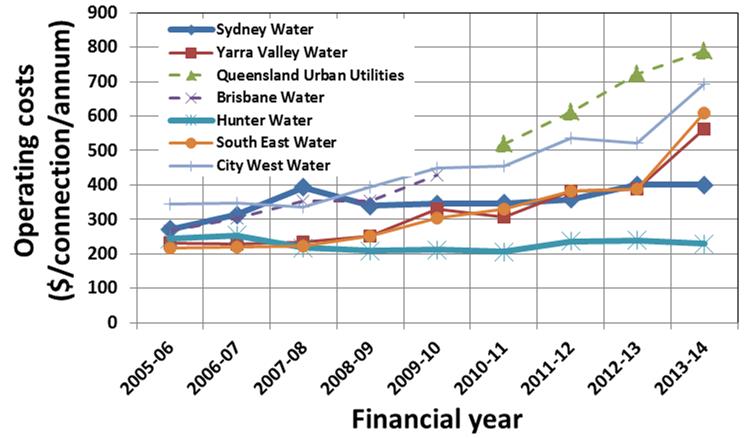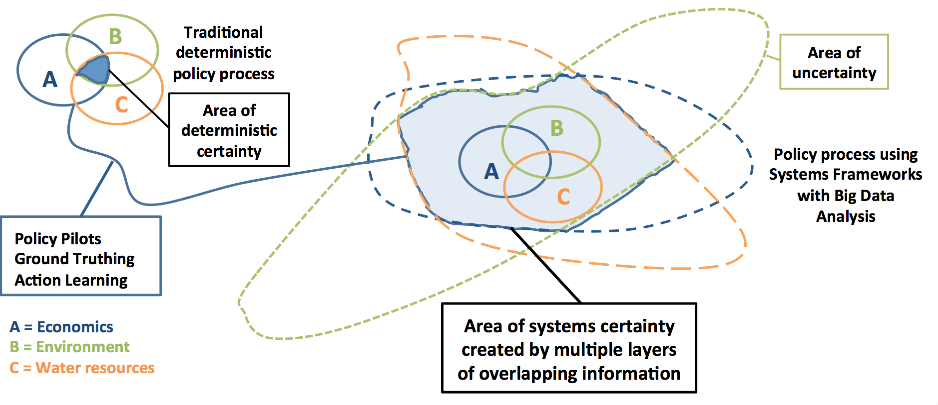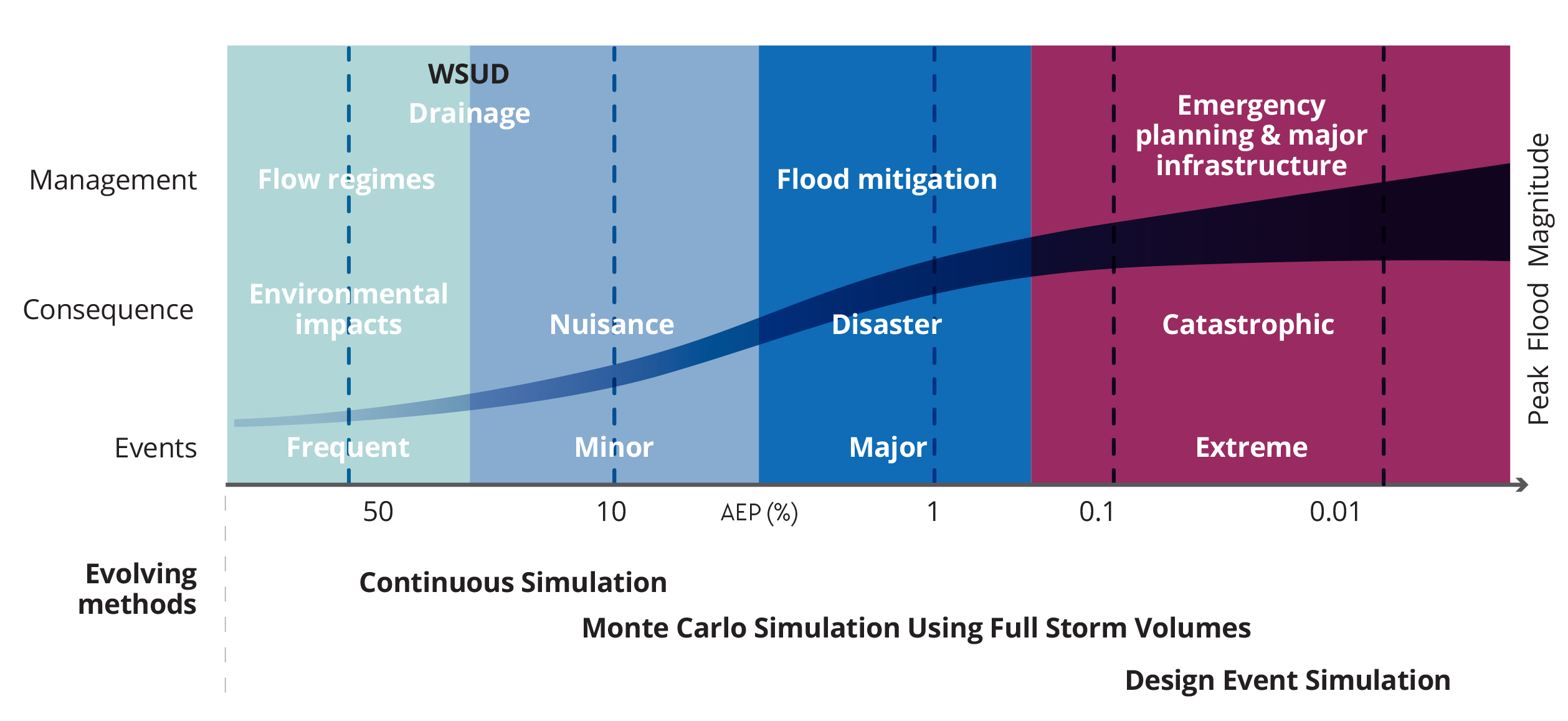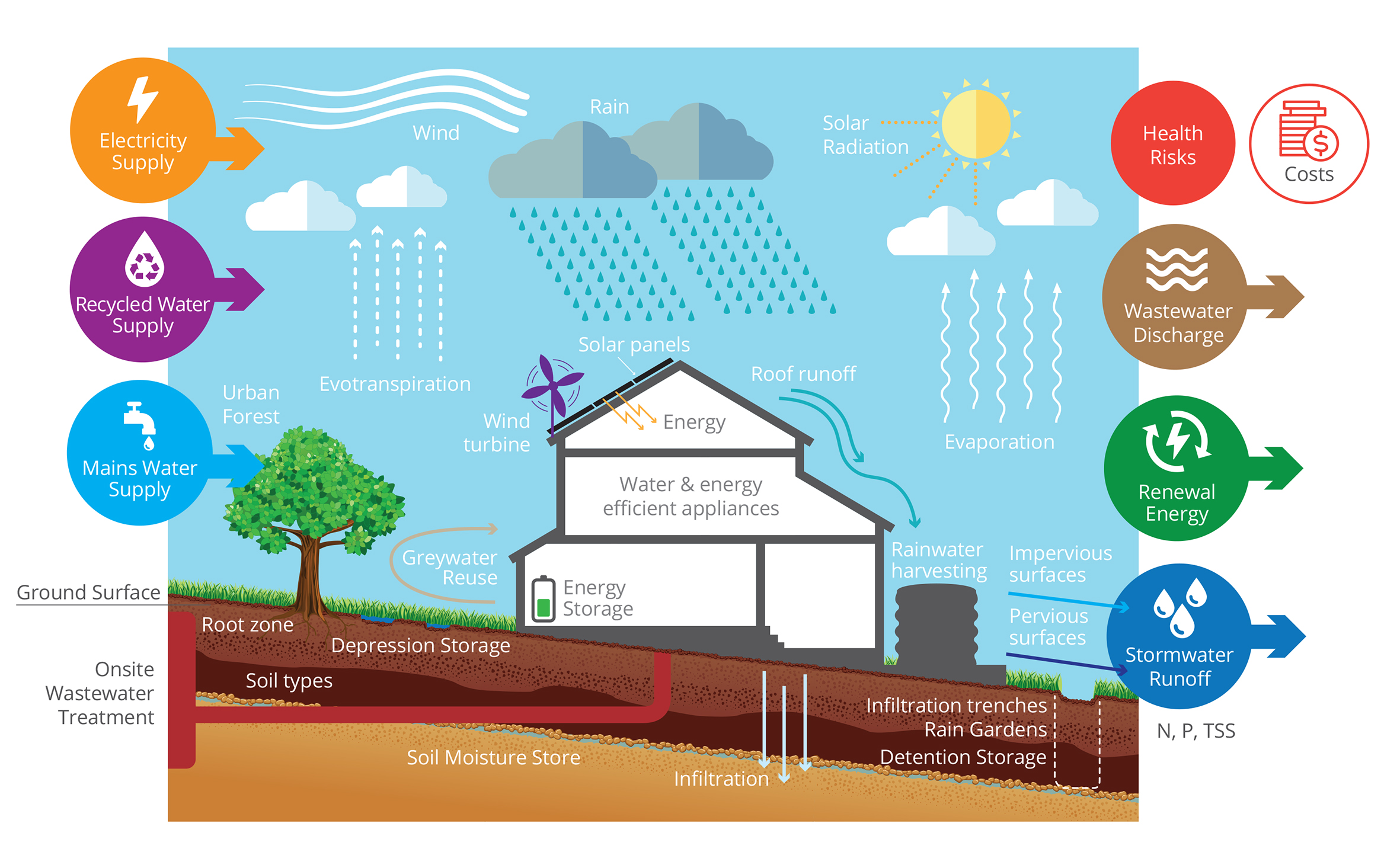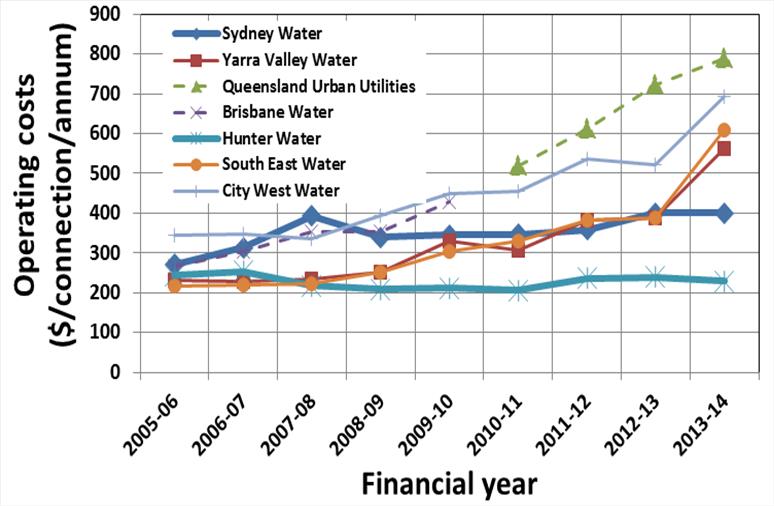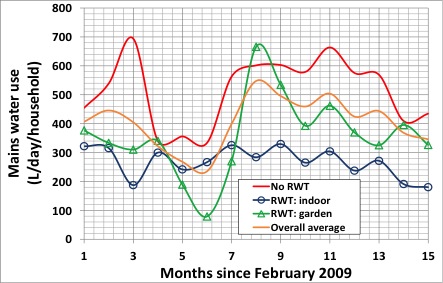On Wednesday 21 October, our paper addressing the impacts of engineering and economic assumptions on government policy was presented to the WSUD2015 Conference. This discussion provided audited water industry data to highlight the dramatic impacts of assumptions on government policy in the South East Queensland (SEQ) region. For more details read the paper here. A combination of actions, strategies and solutions across multiple scale for water management avoided a disaster in our cities. Citizens reduced water use in cities by over 50% by changing behaviour, using rainwater, installing water efficient appliances and helpful response to government restrictions on water use. The urgency of drought also motivated collaboration and solutions across society – barriers to a range of water solutions were overcome by the seriousness of the drought. However, since the end of drought there has been a rush to dismiss most solutions within our cities in favour of water grids supplied by large scale water security infrastructure such as desalination and drinking wastewater. It seems that the water savings provided by our communities are banked by government and these savings are included in our future water resources planning but most of the solutions that created these changes in water use are no longer supported (for example programs supporting water efficient appliances and rainwater harvesting have been abandoned). The future demand profiles may be higher than assumed in water strategies. An example of this is provided in the above paper. Do we fully understand the economic and environmental costs of these policies? Do we fully understand the economic and environmental costs of these policies which may be greater than $12/kL in cities and up to $50/kL in regional Victoria?
Blog
Costs of Water Grids with Security Infrastructure
On Wednesday 21 October, our paper addressing the impacts of engineering and economic assumptions on government policy was presented to the WSUD2015 Conference. This discussion provided audited water industry data to highlight the dramatic impacts of assumptions on government policy. A combination of actions, strategies and solutions across multiple scale avoided a disaster in our cities. However, since the end of drought there has been a rush to dismiss most solutions within our cities in favour of water grids supplied by large scale water security infrastructure such as desalination and drinking wastewater. Do we fully understand the economic and environmental costs of these policies which may be greater than $12/kL in cities and up to $50/kL in regional Victoria?
Impact of Economic Assumptions on Policy
Presentation by Dr Peter Coombes on Wednesday 21 October at 3:30 pm at the WSUD2015 Conference at Dockside, Cockle Bay in Sydney . This presentation examines the impacts of economic assumptions on policy decisions. Economic analysis of targets for sustainable buildings by the Queensland Competition Authority (QCA) and the Rainwater Harvesting Association of Australia (RHAA) is examined as a case study. Contested points include which costs and benefits are inside or outside the boundaries of legitimate and recognised consideration. This presentation refers to those differences as boundary conditions and considers how these assumptions affect the outcome of analysis and government policy.
Systems Framework for Analysis of Policy and Strategy
Presentation by Dr Peter Coombes on Tuesday 20 October at 4:30 pm at the WSUD2015 Conference at Dockside, Cockle Bay in Sydney . The Systems Framework is discussed in many publications focused on describing projects or policies. This presentation provides an overview of the Systems Framework methodologies for analysis of policy, strategy and design developed over the last decade. The framework integrates water cycle, environmental and economic processes from the “bottom up” using all available data and integrating spatial and temporal scales of behaviour.
Transitioning Drainage to Urban Water Cycle Management
Presentation by Dr Peter Coombes on Monday 19 October at the Australian Rainfall and Runoff seminar at the UTS function centre in the UTS Building 10 (Level 10) in Ultimo. This presentation discusses the need to transition the stormwater drainage components of Australian Rainfall and Runoff to accommodate contemporary and integrated approaches to urban water cycle management. The process starts with the integration of land and water planning across time horizons and spatial scales.
Independent Analysis Observations Confirm Value of Sustainable Buildings
Independent Analysis and Audited Observations Confirm the Value of Sustainable Buildings for Greater Melbourne
Breakfast workshop at 7 am on Friday 28 August at Zinc at Federation Square
Good news for modern water and energy utilities, the Victoria government and citizens. The existing system for Greater Melbourne is critically dependent on variations in climate and population. Sustainable buildings substantially mitigate the challenges of variable population and climate – including climate change. Importantly, sustainable buildings operate across multiple spatial, temporal and dimensional scales to generate cumulative reductions in water demands, wastewater generation and stormwater runoff, the cost of providing water, wastewater and stormwater services, and the transfer costs.
No health epidemics from rainwater supply in Australia
There has been a rush to claim widespread health risks from rainwater supplies in water monopoly funded publications. It is claimed that pathogens and lead are a common problem. However, nobody is dying from rainwater supply in Australia. Rainwater harvesting systems have not generated health epidemics or widespread public health notifications from Chief Medical Officers. However, there is a push to privatise water monopolies throughout Australia – this involves dismissing competing water sources to maximise the perceived value of these businesses owned by the bureaucracy.
Impact of spatial and temporal averages on prediction of water security
Use of average water demands that replace spatial and temporal detail of cities in analysis of regional water systems generates dramatic reductions in certainty about system behaviour that leads to large uncertainty in understanding of the performance of the system. The use of global averages in simulation of regional water systems is unlikely to describe the spatial and temporal contribution provided by distributed WSUD approaches that generate water resources or reductions in water demands within a metropolis.
Impacts of innovative WSUD intervention strategies
It is not widely appreciated that innovative Water Sensitive Urban Design (WSUD) intervention strategies can assist in countering the negative effects of deteriorating water infrastructure and evolving urban areas. Deteriorating infrastructure is a problem for the majority of urban centres around Australia and is becoming more important as assets age, populations increase and urban centres expand. These problems generally result in diminishing asset performance and serviceability. This paper provides a discussion of infrastructure deterioration, including some of the specific physical causes of deterioration, and also contrasts current infrastructure practice with innovative WSUD approaches to mitigate the impacts of infrastructure deterioration.
Impact of Local Water and Energy Policies on Government Markets
Presentation by Dr Peter Coombes for the Rainwater Harvesting Association of Australia at 7 am on Thursday 11 June 2015 at Botanical Restaurant, 152 Mt Coot-tha Road Toowong.
Understanding of water and energy systems that are linked to society by holistic objectives is required for development of policy for sustainable operation of government owned markets. It is vitally important that the analysis and decision making for water and energy strategies for a city allows opportunities for complementary strategies at different spatial and temporal scales. These policies should be cognisant of the dimensions and characteristics of an area. These strategies must respond to objectives from the perspective of the whole of society. The use of systems analysis that includes the entire spectrum of economic or financial processes has revealed a wide range of outcomes that are not currently considered in the evaluation of programs. There is a need to incorporate water and energy targets for buildings to balance statutory monopoly ownership of water and to drive sustainable “free” market behaviour for the benefit of state governments.


